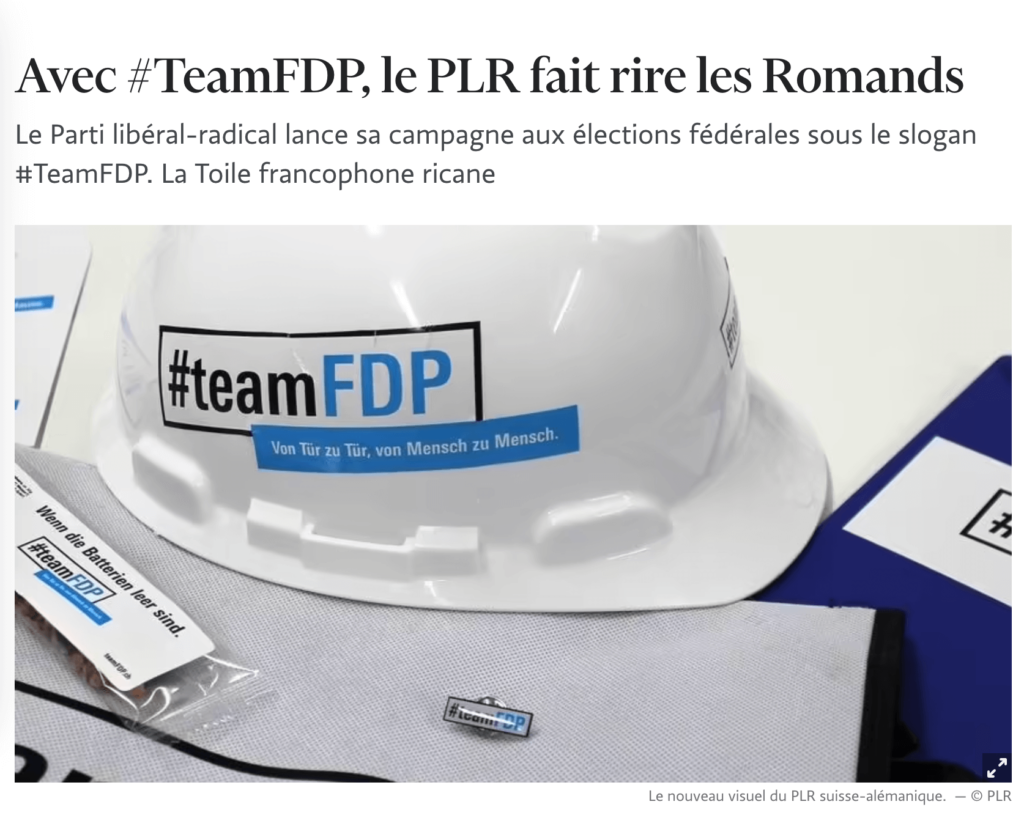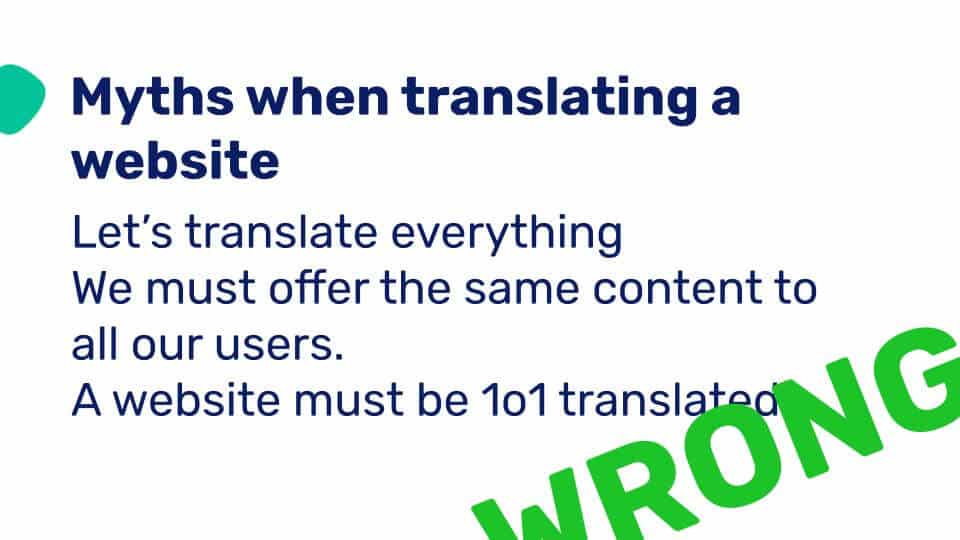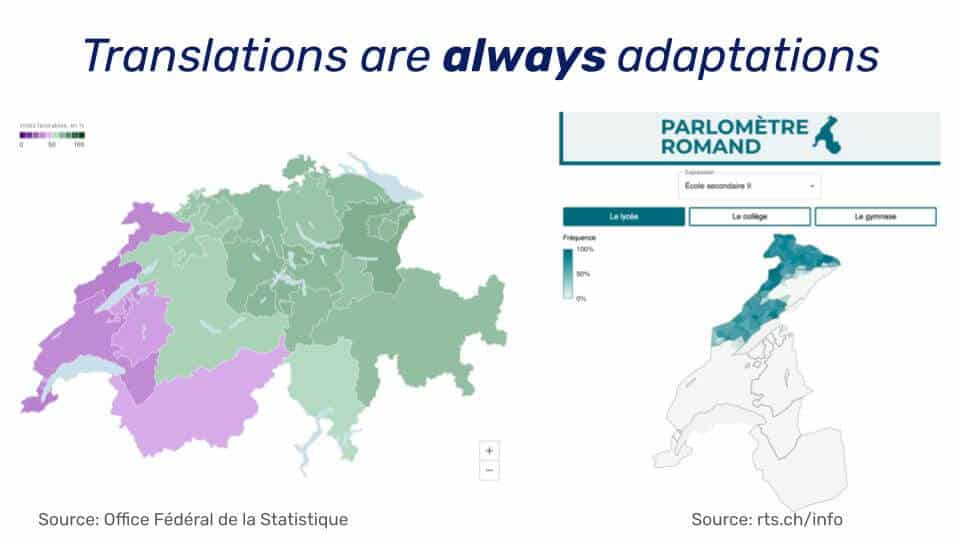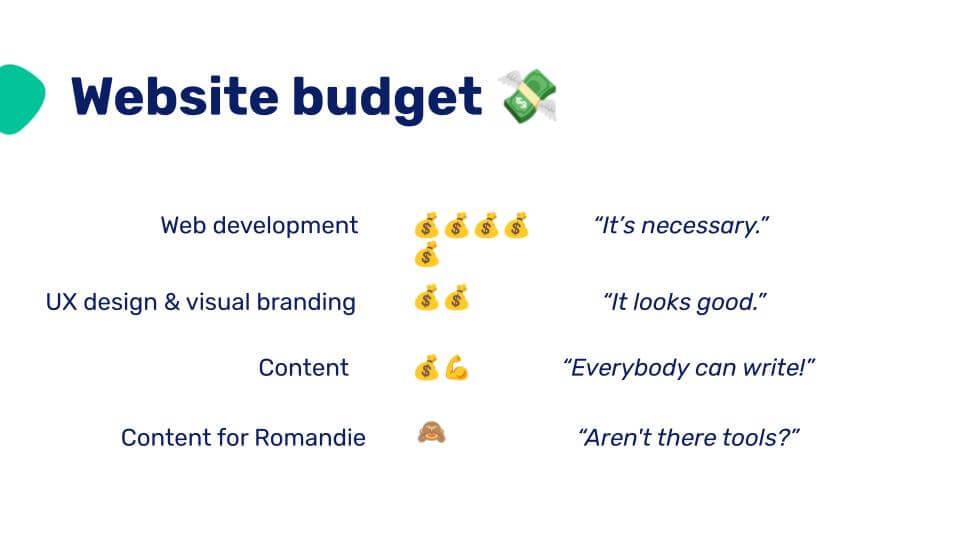Reaching a global audience demands more than just translating your website; it requires a strategic approach to multilingual SEO. This article, inspired by personal experience, introduces a practical “Traffic Light Framework” to prioritize your translation efforts and leverage the right tools for maximum impact.
The journey to organic traffic from different linguistic and cultural areas often involves a crucial step: translation. However, simply translating words from one language to another is rarely enough. This article, based on my 12+ years of experience working in a multilingual environment, delves into the practicalities of using translation strategically to drive meaningful organic traffic.
In Switzerland, companies working across the language barriers are used to the challenges of appealing to a diverse cultural audience. Creating a text that is relevant to an audience goes beyond the language used, it is about how the information is organised and structured within the text. I remember my colleague, David, from Brig, sitting at his desk in Bern, cursing over the translation while proofreading an article. What a waste to pay for a translation to see a colleague rework it so completely. Today I am not only interested in how to create content that appeals to an audience, but also on how to create content that an audience can easily find.
Discover how to navigate the complexities of multilingual SEO and unlock significant organic traffic growth in your target markets: Keep reading or watch Webmardi Can AI save your translation budget and drive revenue? When writing this article, I have in mind a project manager or website owner targeting multilingual markets.
Nota Bene: I tested Gemini to provide a draft of this article based on the transcript of the test run of the talk I delivered at Webmardi. While I feel like Gemini adopted a tone that I would not have been able to strike as a non native English speaker, I feel like the article includes the useful information I wanted to share and it left me more time to work on the visuals. Get in touch with me if you have any questions.
The Pitfalls of Poor Translation: More Than Just a Laughing Matter
In Romandie, we’ve all encountered ridiculous examples of translation gone wrong. While a funny mistranslation on a political party’s slogan might elicit laughter, the impact of poor translation on a website can be far more damaging.

The symptoms of a poorly translated content might be subtle to notice but can significantly hinder your online success. These include:
Stagnant or Declining Traffic in Target Markets: Despite having translated content, you might see your website underperforming in specific language regions compared to your original language.
Low Incoming Leads or Sales: E-commerce or lead generation websites might experience a significant disparity in conversions between different language versions.
High Customer Support Costs: Inaccurate or complicated translations can lead to confusion and increased demand for customer support.
Poor User Experience: If users can’t understand the content or find the information they need in their language, they are likely to abandon your website.
Beyond Literal Translation: Embracing Transcreation and SEO localisation
A common misconception is that translating everything on your website is the key to reaching a global audience. However, the reality is that translation is often an adaptation. There is no such thinking as 1o1 translation. The process of translating includes making editorial decisions. Yet, without a detailed brief or writing guidelines, the translators will make decisions themselves.

Consider the subtle differences even within the same language across different regions, like the terms used for car registration documents in various parts of Switzerland. Depending on the region you might hear: [impôt pour les plaques], [impôt voiture], [taxe auto]. The nuances of language, cultural context, and audience needs necessitate a tailored approach.
NB: To have a laugh about regional differences in French, test the ‘Parlomètre Romand’ created by the RTS.
What is particular about us, in Romandie, explains Mathieu Avanzi, linguist, is that we are very tolerant to variations. As opposed to France, where a vocabulary difference is prone to be laughed at, in Romandie, we never use wrong words:
“The right variant is the one that is used locally. There is no standard variant. In fact, it’s hard to say whether a French-speaking Swiss or a French from French-speaking Switzerland is correct or the reference. All variants are equal”.
Read linguist Mathieu Avanzi’s quote directly in French:“La bonne variante est celle qui est utilisée localement. Il n’y a pas une variante qui est standard. On a d’ailleurs du mal à dire s’il y a un suisse romand ou un français de Suisse romande qui est correct ou de référence. Toutes les variantes se valent”.
In other words, French spoken in Switzerland is uniquely varied and rich. As a result it is uniquely difficult for a brand that is not local or that is translated, to strike the right tone. To top the linguistic difficulty, In Switzerland, we are together yet different. We are often reminded of this at voting. Blatant cultural approach and differences exist between linguistic areas.

In Switzerland, neither are we French or German. Neither do we speak France nor Germany. As a translation is always an adaptation: if you don’t provide a briefing for your brand, either the translator or the tool decides how close the text is to the audience or to the original text.
What works for one segment of the population might not resonate with another. Therefore, a successful translation strategy requires understanding:
Context: Who is the content for? What is the purpose of the content? Where is it located on the website?
Audience Needs: Does the target audience actually need this specific content? Will it be impactful and drive traffic and conversions for them?
Regional Variations: Be mindful of stylistic differences and common expressions used in different regions speaking the same language.
Defining transcreation and SEO localisation
Transcreation involves adapting content in a second language. The text transfers the intention, message and main information in a way that is relatable to the target audience (as opposed to similar to the source text).
SEO localisation means transcreating a text while making sure that it remains discoverable by search engines. The text caters to the search habits, cultural requirements, and user preferences.
The Budget Balancing Act: Prioritization is Key
Often, website translation projects face budget constraints. The ideal scenario of transcreating the content might not be feasible. This is where strategic prioritization comes into play.

Effective budget allocation
I call the framework I have developed over the years for effective budget allocation: “Traffic light system”. The core idea is to focus your resources on the content that has the highest potential to drive traffic and conversions in your target markets. This involves:
Identifying Key Objectives: What are the company’s primary goals for each target market?
Prioritizing Content: Not all content is created equal. Determine which pages or sections are most crucial for achieving your objectives. This could involve focusing on specific stages of the marketing funnel or key product/service offerings.
To prioritise content based on key objectives, I see two different approaches:
Horizontal focus: working on a step in the marketing funnel. For example starting with the home page, the services pages and the contact page.
Vertical Focus: choosing a vertical that is essential. For example, a service and all informational pages related to this service.
The most important pages will benefit from the most effort. While the lower priority pages will be afforded the minimal effort. Today’s tools and different specialties (from SEO localisation to using a tool to translate content) allows a wise budget distribution.
The Traffic Light System: A Framework for Translation Quality and Effort
The “traffic light system” provides a practical way to manage the level of effort and quality applied to different pieces of content:
Green Light (High Priority): This content requires the highest level of attention and quality. This involves thorough research, strategic keyword selection, professional copywriting (potentially by a local expert), and a comprehensive checklist for quality assurance. This is where you invest the most time and resources.
Orange Light (Medium Priority): This content still needs to be accurate and effective but might involve a slightly less rigorous process. This could involve a mix of AI translation with careful human review and a focused checklist.
Red Light (Low Priority): This content might be translated using basic AI tools with minimal human intervention, primarily for informational purposes where absolute perfection isn’t critical.
Choosing Your Translation “Mix”: Tools and Human Expertise
There are various options for your translation approach, ranging from fully localized content creation optimised for search engines to basic machine translation.
Local SEO localisation: Engaging a local expert to research, strategize, and write content specifically for the target audience. This often yields the best results in terms of resonance and impact.
Local Human Copywriting: Hiring a local copywriter to adapt existing content or create new content based on your brief.
Local Human Translation: Utilizing a human translator who is a native speaker of the target language but may not have specific expertise in SEO or copywriting.
Basic Translation Tools: Employing machine translation tools like DeepL or Google Translate for quick and cost-effective translation.
It’s crucial to understand the trade-offs associated with each option. While machine translation offers speed and affordability, it often lacks the nuance and cultural understanding of human translation. When using tools or hiring copywriters and SEO without cultural local understanding, it is crucial to manage expectations: don’t expect the quality and results of locally written content from machine translation tools and profesionnals that are not local.
The Power and Limitations of AI in Translation
While AI translation tools have made significant strides, they are not a silver bullet. I have experienced several limitations:
Strategic Tasks: AI is not well-suited for strategic work like keyword research, identifying content gaps, or understanding user intent.
Nuances of Language: AI can struggle with idiomatic expressions, cultural references, and the subtle differences between regional variations of a language.
Gender and Inclusivity: AI tools might default to masculine forms in languages like French, potentially overlooking gender-inclusive language options.
Branding: AI can misinterpret brand-specific language, tone, or even product names.
Therefore, while AI can be a valuable tool in the translation process, human oversight and expertise remain essential, especially for high-priority content.
Building Your Own Checklist: Ensuring Quality
It is important to create a customized checklist for each traffic light category. This checklist should encompass various aspects of content quality, including:
On page SEO: Ensuring the right keywords are used naturally within the text and on page SEO best practices are leveraged
Copywriting in Context: Writing compelling and persuasive content that aligns with the website’s purpose and target audience.
Branding Consistency: Maintaining consistent brand messaging, tone, and terminology.
Reading Experience: Focusing on clarity, readability, and overall user experience.
An impactful quality checklist includes a variety of criteria:
The specific items on your checklist will depend on your client’s needs, preferences, goals, budget and your own experience with translation tools. Yet you need to balance the number of checklist items included in the Orange traffic lights. Per definition, using a tool means a low effort. If the number of checks to be done on text translated by a tool is high, there is no advantage of using a translation tool.
Step by step Process
To wrap up, here is my recommended step by step process when it comes to website translation or translation optimisation:
- Identify company’s objectives
- Prioritise:
a step in the funnel or
a vertical at each step - Define effort expected (traffic lights)
- Select your translation mix
- Manage expectations
- Translate and optimise
- Analyse results
- Adjust
- Repeat
Key Takeaways for Effective Translation
Expanding your online presence to new markets offers a significant opportunity for organic traffic growth. By understanding the nuances of multilingual SEO, conducting thorough research, investing in quality translation and localization, and ensuring your website is technically optimized, you can effectively reach and engage new audiences worldwide.
Don’t rely solely on tools for strategic work. Human expertise is essential for understanding the nuances of language and audience.
Be aware of the limitations of machine translation. While useful for basic translation, it often requires human review and adaptation.
Develop a customized traffic light system and checklist to manage translation quality and effort effectively.
Prioritize your translation efforts based on your objectives and budget.
Understand that translation is an adaptation, not just a word-for-word conversion.
Multilingual SEO is an ongoing process that requires continuous monitoring, adaptation, and a commitment to understanding and serving your audiences. By embracing the diversity of your audience and implementing a strategic approach to translation, businesses can effectively navigate the multilingual landscape, connect with new audiences, and unlock significant organic traffic growth in their target international markets.
